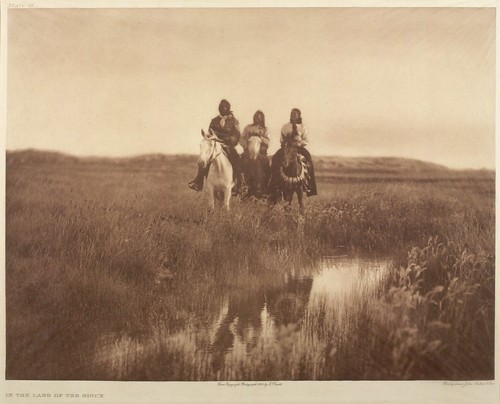
‘In the land of the Sioux’
courtesy of ‘Smithsonian Institution’
Ask someone on the street about Native American history and more often than not, they’ll most likely recall the “Thanksgiving story,” the Indian Wars of the late nineteenth century, “Custer’s Last Stand,” or probably the (abysmal) movie Dances With Wolves. It’s an era of our nation’s history that I think many know little about – or choose to look the other way – and I cannot blame them for it. It’s not a pretty period of history, nor is it exactly the United States’ most proudest collection of moments.
When I saw the National Museum of the American Indian’s (NMAI) press release regarding the variety of activities in celebration of Native American Indian Heritage Month, one of the events that caught my eye was today’s lecture with NMAI Director Kevin Gover and museum historian Mark Hirsch. They were speaking regarding a book the Smithsonian released last year, American Indians, American Presidents: A History, edited by Clifford E. Trafzer. While I couldn’t attend the lecture, I had wanted to interview both Director Gover and Mr. Hirsch regarding the book and its impact but despite both NMAI and my best efforts, we couldn’t quite make things work out.
Nonetheless, I decided to forge ahead with a look at this book – even though it was released last year – for a variety of reasons. Native American history is a subject very close to me, for starters, and is an era of history I feel is mostly glossed over in classrooms. The struggle of Native Americans during this country’s formation and rise to power is something that cannot be ignored and, I believe, contains lessons for our future as a nation and as a people.
So I asked NMAI for a copy of the book, eager to see what new perspectives awaited within. And…I was left wanting. Continue reading